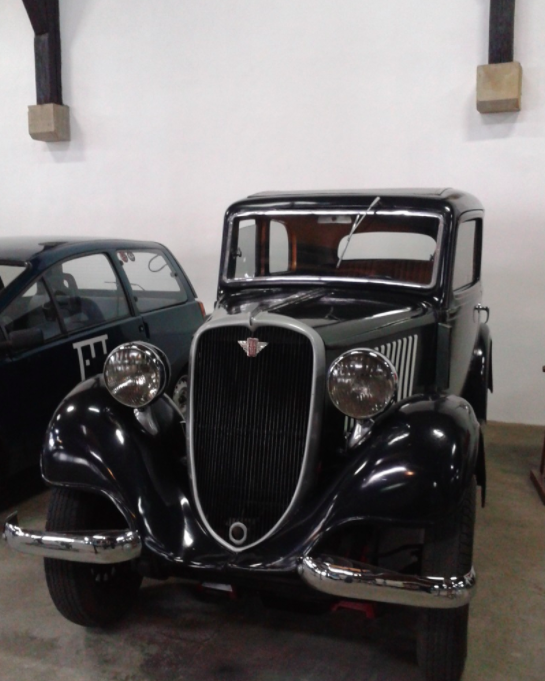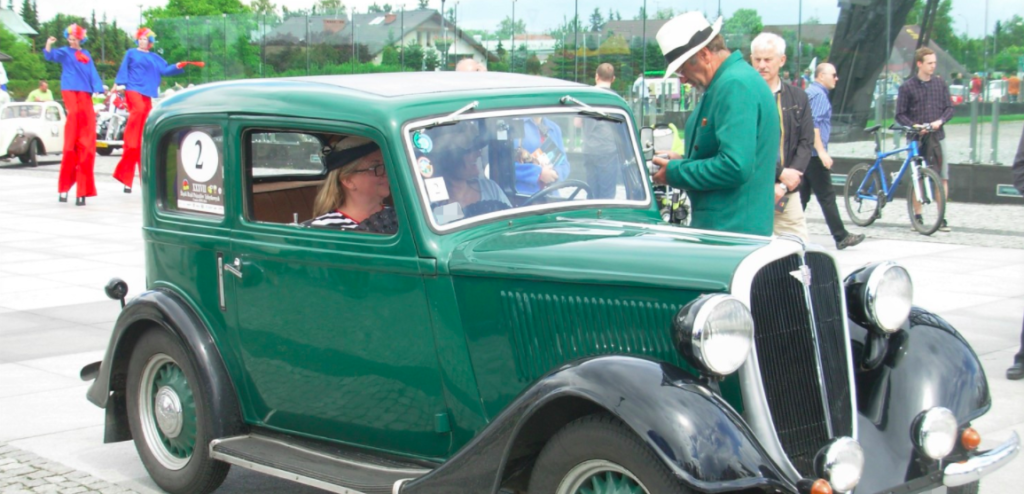„The icon of Polish roads in the 1930s was undoubtedly the Polish Fiat 508 Junak III series, which, even before the era of the popular small car, was the automotive dream of many Poles. In addition to the well-known passenger version, the 508 was also available as a pick-up truck, a panel van or a sanitation van, the body of which was made from wood from Polish forests,” writes Marcin Zachariasz.

The third incarnation of the 508 model in the Polish Fiat range appeared in the summer of 1935 and was a slightly improved version of the Italian prototype. It could be distinguished from the older versions by its doors, which no longer opened against the wind, and the soft roof covering. The improved steel bodywork and reinforced chassis were also striking features. There wasn’t a driver in Poland at the time who wouldn’t sigh at the eye-catching silhouette of the small yet elegant car. Many parts from domestic suppliers were used in its assembly. One such component was a set of headlights, the production of which took place at the domestic Marciniak plant. Preserved in original condition, the headlamps with unbroken diffusers can be worth a fortune today.
It is not afraid of the crisis
The Junak was praised for being quite affordable compared to other vehicles and for its innovative four-wheel hydraulic brake system. The car was fitted as standard with a 4-speed gearbox, where the 3rd and 4th gears were synchronised. It was powered by a mere one-litre 24 hp lower-valve engine, which was renowned for its negligible fuel consumption. The fuel consumption on the road was usually 8 litres per 100 kilometres travelled, which was a good result against the backdrop of the 'cculverins’ produced at the time with large drive units. Therefore, Proud owners of Fiat could drive it even further without much concern. The problem, however, was the rather small luggage space, which was difficult to accommodate even four people.
Forewarned is forearmed
Although the car, which was being built in the 1930s, had a reputation for having few faults, there were as many as 31 service stations spread throughout the country at the disposal of its owners. With a special brochure, the driver had access to their detailed map, on which Lviv was still considered a Polish city. On the other hand, the factories located on Terespolska Street in Warsaw were responsible for the supply of cheap spare parts.
Front version
The Fiat passenger car produced in Warsaw also served as the basis for the development of its military variant, the 508 Lazik. The fathers of the success of the car without doors and hardtop were engineer Świerczyński and engineer Tański – the creator of the unforgettable CWS. The first units of the military version of the Polish Fiat 508 were ready as early as 1936. Although their production ended three years later, a large number of Polish Fiats bravely served during military operations in World War II. In addition to cars equipped with a differential lock and numerous equipment holders, variants were also built for military use as ambulances. Although only 1,500 rovers were ultimately built, there were cases in which factory-preserved cars were found far beyond the borders of Poland, where they ended up through the turmoil of war.
The charm of those years
The image of the latest version of the Polish Fiat 508 has featured in dozens of works of Polish cinema over the years. The small yet elegant car was driven by Henryk Kwinto (played by Jan Machulski) in the gangster comedy Vabank, directed by the actor’s son, Juliusz Machulski. Borrowed in 1981 for filming, the car is still the apple of the owners’ eye and is often seen at Polish gatherings and classic rallies.
Great-grandfather of the Maluch on which you lavish care today
Production of the vehicle, which reached a maximum of 100 km/h, was (for well-known reasons) terminated in 1939. The examples that survived the tough pre- and post-war eras began to shine again in the 1960s when the veteran road car movement began to flourish. Many Polish Fiats were then rescued by their owners in every possible way. Some had indicators from the Syrena, and others were powered by a non-original motorbike. Anything to just drive forward. Today, even the smallest component of this model is a real treat for anyone lucky enough to have this pre-war marvel in their garage.
Author: Marcin Zachariasz, www.klassikauto.pl, from www.dlapolonii.pl
Photos: Author’s archive









